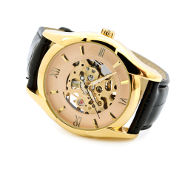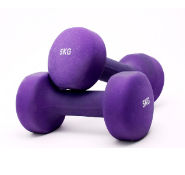
CE marking is mandatory when importing many products to the European Union. The stakes are high, as your shipment can be seized by the customs authorities if it’s not properly CE marked and certified.
But what is the cost of CE marking and certification? And, who should pay for it?
In this article, you will learn how you can manage the CE process on your own without paying a single euro – but why it makes sense to hire a consultant to handle certain parts of the process.
At least the first time you import a product that must be CE marked.
But first, let’s recap on what CE marking actually is:
CE is a framework, rather than a standard. Many, but not all, EU directives require that a product is CE marked.
To CE mark a product, you must take these steps:
a. Create the CE label file (and make sure that your products get labelled correctly)
b. Confirm all applicable directives (i.e., RoHS and LVD)
c. Create a User Manual, Technical file and Declaration of Conformity
1. You can practically do it yourself without spending a cent
CE marking involves creating label files and a set of documents. That’s really how simple it can be to get your product CE compliant.
You can find a lot of information about applicable directives and EN standards for free on the internet, including here on Chinaimportal.com.
It’s indeed time consuming, but you can do everything by yourself, for free.
For most products, third party lab testing is not even mandatory, even though it’s recommended.
If you decide to go through the CE marking process on your own, you need to take the following steps:
a. Research all applicable directives
b. Create label files
c. Create Declaration of Conformity, Manual and Technical file
While a test report may not be mandatory, notice that the authorities in any EU state can require that you provide a test report to prove that the product is compliant with all relevant EN directives.
Normally, you don’t need to submit the documentation or get any form of third party approval. You just create the documents and keep them for at least 10 years.
It’s indeed time consuming to figure out how these documents should look the first time, but it’s highly rewarding as you can easily replicate the process when importing other products in the future.
2. Or, hire a Consultant to manage the CE marking and certification process for you
Many importers have the idea that they can simply forget about safety standards, technical files and CE marks.
And you can indeed, if you hire a consultant that manages the process for you.
A Consultant can, for example, do the following:
a. Assess all applicable directives and EN standards
b. Create the user manual
c. Create the label files
d. Create the Declaration of Conformity and Technical file
While hiring a Consultant is a shortcut, they don’t work for free. If you intend to let one handle all 4 parts described above, you should expect to pay anywhere between $6,000 to $15,000. Depending on the product.
That said, you may want to consider hiring a consultant for certain parts of the process the first time you import a product, covered by one or more CE marking directives.
That way you can learn how it’s done, and manage most of it when importing other products in the future.
3. Lab testing is not mandatory for most products (yet, recommended)
Third party lab testing is, as I already mentioned, not mandatory when importing most products that must be CE marked.
That said, the customs authorities or market surveillance agencies can demand that you provide test reports that prove the product to be compliant – with all applicable EN standards.
If you cannot provide a test report, they can refuse entry or even force a recall.
Sometimes, they even purchase product samples from online stores, that they then take to government labs to for compliance testing.
I’m not making this up.
Further, Amazon.com can also require
Given that a huge share of imports from Asia to the European Union consists of non-compliant and dangerous products, I know that they will only step up enforcement in the coming years.
At the end of the day, lab testing is ‘de facto’ mandatory.
So, how much should you expect to pay? Below follows a few cost examples:
- Material samples (i.e., fabrics, metal or plastics): $400 – $600
- Electrical safety testing: $700 – $2000
Notice that these costs are set on a ‘per product’ basis. Additional product test will multiply the cost.
4. Importing from China? Don’t expect your supplier to share the CE certification cost with you.
Why not let the supplier carry the cost? They’re the ones making it after all, and you should just need to sell it.
Well, that’s simply not the way things work.
First, CE marking and certification is only required in the European Union. As such, foreign (non-EU) manufacturers are simply not required by law to comply with EU regulations.
Second, if they had to hire lawyers and consultants to keep up to date with EU regulations, create labels and documentation – they would of course be forced to pass on the cost to their customer anyway.
Thus, it wouldn’t even make sense if the manufacturer paid the CE marking and certification cost.
At best, they can help you out with the technical file, but that’s about it.
When it comes to research and lab testing, you are on your own.





















Dear Sir,
Anyone have any idea how much to engage a body/agent to keep the CE Technical File at the destination country for 10years ?
Thank you.
Hi Rachel,
You can request a free quote here: https://www.chinaimportal.com/compliance-consulting/
Hi Mr. Gronkvist.
The problem is multi-level.
I just gave up trying to tell potential manufacturers/suppliers what documentation the CE Mark involves.
At the Hanover Tradefair, 4 years ago, I explained to many potential manufacturers/suppliers what a Technical File and an EU DoC are and what self declaration is all about. They kept telling me that they understood. Once they got back in China nothing happened.
Their argument. We sell to Europe and only you are asking us for this document.
In my opinion the solution is that once a product leaves for Europe the shipping agent along with the shipping documents should have an EU DoC, and on the EU Doc an address in Europe where a hard copy of the Technical File is kept. If it doesn not have these documents he cannot ship the consignment. Take up this lead and give it a try with the authorities.
It is a fact that a manufacturer, knowledgeable about one’s products and the material it is made of, ought to know what Standards apply to the country one intends to sell. This role is part of the manufacturing process. The importer’s role, not knowledgeable about the manufacturing process and the Standards, is to know the end use of the products and sell the product.
Who should pay for the CE Marking?
If it is a new product designed by the importer and exclusively sold to him, it stands to reason that he should bear the cost.
However, for a standard product already in production it is the manufacturer that has to pay.
Why should this be so?
How much does abiding to EU Directives and Standards and making a self-declaration document cost? The prodcut can be sold to many importers and therefore it should be considered as an investment and pays for itself many times over.
best rgds
Paul Licari
Alfatrade
Malta.
Hi Paul,
“Their argument. We sell to Europe and only you are asking us for this document.”
Yes, that is their standard response!
Forcing importers to provide the DoC as part of the shipping process would be an interesting move. I guess it’s hard for the forwarders to assess if the DoC / test report and other compliance documents are actually valid for the product though.